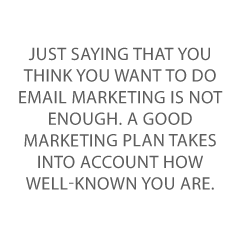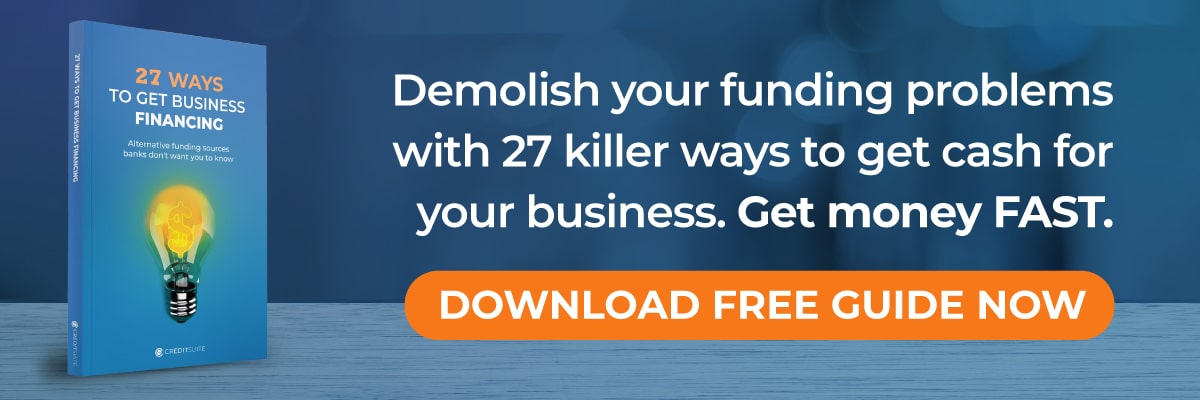You know you need to do it. But it’s kind of expensive. But what if you could become more independent, and start financing marketing, rather than hunting around for a budget for it?
You can actually get small business financing for your marketing campaigns. And for newer businesses, this is particularly helpful, as you are inevitably spending more on marketing campaigns than a more seasoned business does.
How To Finance A Marketing Campaign
Step 1 – Perform Market Research
Just like with any other spending you want to do, you should be checking to see if any of this is necessary, feasible, or advisable.
If you already have a solid business plan for your small business, then it is likely that you have already undertaken this step.
But if you have not, there’s no time like the present. Determine if the new product or service you want to market has enough potential for the business to pursue it at all.
Sometimes, the best decision for some marketing campaigns is not to do them at all.
But if you are going to go ahead, read on!
Step 2 – Get Together a Marketing Plan
In particular, if you need to answer to investors (such as if your business is funded by venture capital), then you will need to do some serious research and planning.
 Just saying that you think you want to do email marketing is not enough. A good marketing plan takes into account how well-known you are. Do you need to promote brand awareness, or distinguish yourself from a crowded competitive field?
Just saying that you think you want to do email marketing is not enough. A good marketing plan takes into account how well-known you are. Do you need to promote brand awareness, or distinguish yourself from a crowded competitive field?
If you purchased a business that wasn’t doing so well before, you may need to add public relations to your to-do list. And if you’re planning on content marketing, you may need to hire a writer.
Step 3 – Draw Up a Marketing Budget
The Small Business Administration reports that an average small business spends about 1.08% of its revenue on advertising. However, there are variations from industry to industry.
Does your industry have a trade association or any industry trade publications? If so, check to see if they offer any benchmarks for setting a budget.
Depending on the rate of your business growth, you may want to add more or less to your budget. For example, although it can be harder to afford if sales are slipping, that can often be the time to increase your budget, rather than decrease it.
After all, you won’t be able to turn things around if no one can find your products to buy them.
Step 4 – Work on Building Fundability™ and Business Credit
Why should you worry about business credit for marketing purposes? Because you can purchase certain products and services to advertise your business, and you can do so with business credit.
As a small business owner, you should be looking to squeeze 101 pennies out of every dollar if you can. Building business credit means your dollars can do double duty.
Building Fundability™ means, among other things, creating a professional business website and having a separate business address. It also means getting all licenses and permits necessary to run your business.
All of these things will help assure a customer and potential customers that your business is legitimate and not fly-by-night.
Step 5 – Investigate and Vet Your Options
Digital marketing is attractive and up to the minute. A lot of it is free. But that doesn’t mean it’s the best possible choice for your small business. Rather, business owners should consider where their ideal customer is likely to be.
For a better marketing strategy, keep demographics in mind. A business which sells to young adults and teenagers probably shouldn’t be advertising on LinkedIn. One which sells to the wedding industry would do well with Pinterest.
But not everything has to happen online. For example, a small business catering to truck drivers will likely do better with everything from billboards to sponsorships at rest areas.
Step 6 – Apply for Financing for Your Best Option
Finance for marketing doesn’t have to come out of your profits or your personal accounts or your business’s savings. Why not consider financing which does not depend on your best sales associate regularly crushing it?
Financing can take the form of credit cards, loans, grants, and more. Your best financing option could be a business line of credit.
As you consider finance for your business marketing, keep in mind factors such as interest rates, the amount you can borrow (or earn via a grant), how long you have to pay it back (if applicable), and any restrictions on the financing.
Step 7 – Run Your Campaign and Keep Metrics and Notes on It
Your campaign should never happen in a vacuum. That means you take note of what’s working, and what isn’t. Maybe you’re pouring money into an area that your ideal customer (buyer persona) just doesn’t go to or use.
Keeping and paying attention to metrics will help you to determine what’s working… and what isn’t. And be patient! Your campaign might need a bit of time to catch fire with your customers and prospective customers alike.
For campaigns directed at consumers, you may find that there are marked differences between weekday and weekend when it comes to interest, engagement, and sales.
Options For Financing A Marketing Campaign
Option 1 – Our Credit Line Hybrid
Do you have good consumer credit? Or can you work with a credit partner who does? Then the Credit Suite Credit Line Hybrid could be the perfect finance choice for you.
Marketers can get working capital in the form of $150,000 in ‘no doc’ business credit cards! And because you will not need to supply income and assets information, this financial marketing choice is great for startups.
In fact, marketers won’t even have to provide collateral. The main requirement to get this capital is good consumer credit. And this is fast capital, too—with 24 hour pre-approval. Pay 0% interest for 6 – 18 months.
Option 2 – Business Credit Cards
We talk about business finance by way of business credit and credit cards a lot here at Credit Suite. But it’s for good reason. Credit for your business can become independent of your personal financial situation and it can be a viable option even when you have a startup.
 The marketing materials that you will need will most likely include everything from a logo to web design services to brochures. But did you know that marketers can finance all of these with business credit?
The marketing materials that you will need will most likely include everything from a logo to web design services to brochures. But did you know that marketers can finance all of these with business credit?
Supporting your marketing efforts now and paying for them later is a great way to get up and running—and leaving finance for other expenses, such as rent and payroll.
Option 3 – Term Loans
These are often the first thing we think of for any type of financing. And this form of finance has one hard to beat perk—the amount you have to pay is predictable. This helps with budgeting.
But a traditional lender such as a bank isn’t always the best choice when you want to finance marketing.
How about a financial institution that is purely online? Many of these financing firms have been in business for years now. Also, their requirements tend to be more lenient than those of traditional finance providers like banks and credit unions.
This makes them good choices for startups and for entrepreneurs with bad consumer credit.
Option 4 – Grants and/or Crowdfunding
Both are forms of funding that (usually) you don’t have to pay back. Grants may come with some stipulations as to their use. As for crowdfunding, some platforms may restrict what you can say you will do with the funds.
For a grant, you may need to show detailed information on how you will attract potential clients.
And with crowdfunding, will prospective clients take issue with your campaign? You may find you lose a client or two if it looks as if you promised something and then failed to deliver.
Still, with crowdfunding, entrepreneurs who are good at it may find it to be decent practice for future marketing activity.
Takeaways
To start and maintain your business and its independence, you will need to market, and you will need to pay attention to any insight you can get into how your efforts are doing. Marketing managers can’t afford to just go in blindly and expect overnight success.
Contact us today, and let us show you how to fund and nourish your independent spirit and succeed with business credit and financing!

